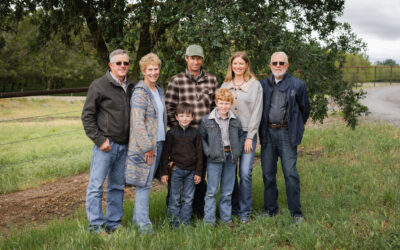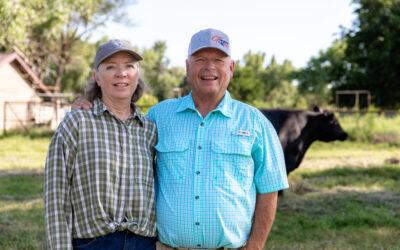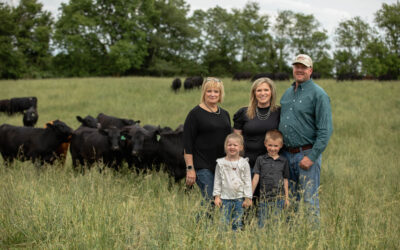The footsteps we follow
It was a soft-spoken plea, not a demand, but still: Gulp. Pit in my stomach.
Had something changed in the past 15 years since Senior Editor Steve had visited this Rea, Missouri, pasture? I got out of the passenger seat to open the gate, then watched Johnnie Hubach pull through, wondering if I was watching my story pass by, too.

Now that’s a story, and it builds on a previously told one.
Back in 2002, when Steve and intern Heather Hopper first visited Johnnie to highlight the family’s 2002 CAB Commitment to Excellence award win, the title was “Taking The Luck Out of It.” Indeed, luck had little to do with 55% of his calves meeting the Certified Angus Beef® (CAB®) specifications when industry average for black-hided calves was just 17% at that time.
Even then, Johnnie preferred to talk about the cows, and the mentors who influenced and helped grow them.
“It wasn’t just a carcass deal with him, either,” Johnnie recalled of his early work with C.K. Allan of Woodland Farms. “He wanted to make a good cow and a good package there for a lot of different traits, not just the carcass traits.”
Still, the updated data is worth mentioning: In 2014, 2015 and 2016, 100% of the Hubach cattle earned the CAB mark, while 15% on up to 29% of those cattle graded Prime in the past five years.
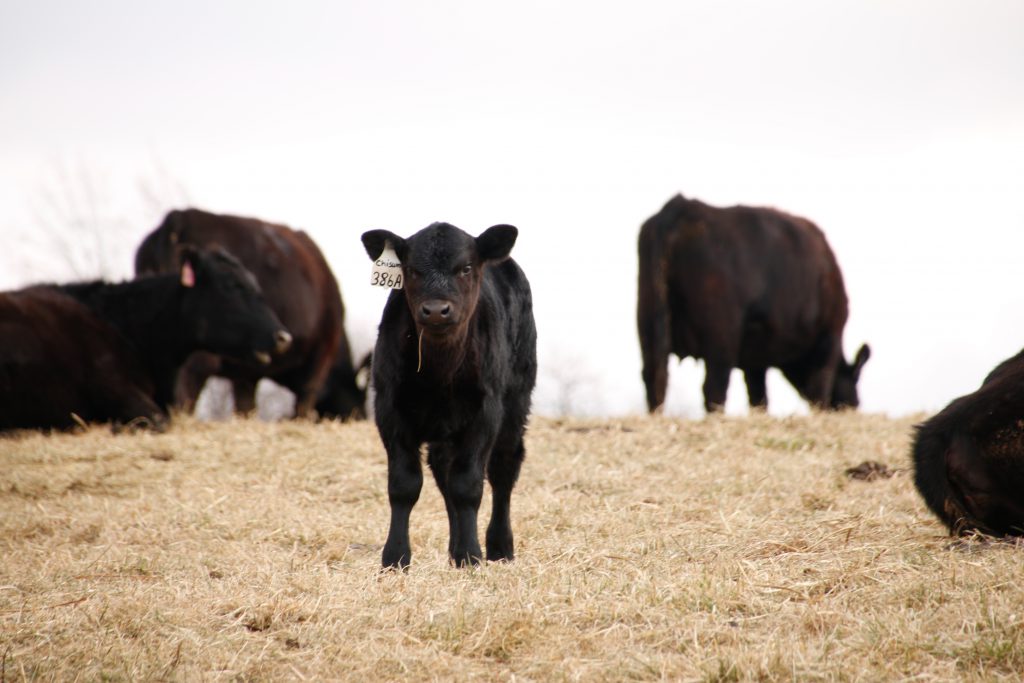
He bought a group of six-year-old cows from Johnnie last year based on their progeny’s carcass data and mothering ability.
“We’re picking up Johnnie’s cows at six years old and we’re expecting at least three more calves out of them, and I’m confident there will be more than that. They look like black refrigerators out there – their feet, their mouths, maternal instincts are just solid,” Aaron said. “Johnnie is just a really good example of what we’re trying to accomplish. He’s a good role model.”
Just as Johnnie continued to guide my carcass-driven questions back to the cows at hand, Aaron and another young cattleman from Springfield, Rick Aspergren, kept moving from the cows to the man behind them.
“Johnnie’s kind of our hero – he’s doing what we want to do. He’s got that perfect set of cows, those cookie-cutter cows,” Rick said. “They’re foundation cows.”

Because, still, before any story trip – especially one where I know he has actually gone before me, or when I get one of those sinking pits in my stomach mid-interview, I find myself wondering: “What questions would Steve ask here? How would he approach this?” Then, I call Miranda: “I saw this on the feedlot close-out… how do we learn from it? What’s the best way to present this data?”
Ask Johnnie how he’s made strides in his genetics in the 15 years since we last visited, and he’ll tell you, it’s in the questions you ask and those you follow: “I’ll just put it to you this way – I’ve learned a lot. I had good help back then, too. I had people to mentor me, and people I was lucky that they were around.”
We’ll share more about those footsteps and the impressions the Hubach herd is leaving for others in the next Angus Journal.
Until then, keep questioning!
-Laura
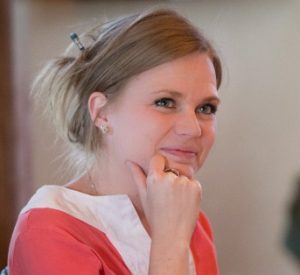
You may also like
Legacy in the Golden Land
On a quiet stretch of Northern California rangeland, a different story unfolds. The Borror family’s legacy modestly speaks through the cattle they raise, the ground they steward. The generations who’ve made a life here demonstrate commitment to doing things right, even when no one is watching.
Helping Hands, Helping Herds
“When I die, I want to come back as one of your cows,” murmurs a friend to Steve Zybach. Full to the brim from an alfalfa ration every day, bountiful fields of lovegrass stretched out across the Texas Panhandle—and owners who leave no ounce of cattle care up for question. The Zybachs’ motivation for this level of dedication to their Angus cattle is simply love.
An Ambassador for All
Joanie, with daughter Lindsey and her husband, Adam Hall, raise registered Angus cattle with two primary goals: producing high-quality seedstock that perform well in a wide variety of environments and ensuring end-user satisfaction. Those goals tie everything together, from promoting Angus to other producers to sharing their story with CAB partners and beef consumers.

